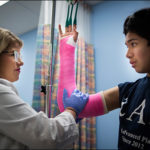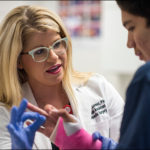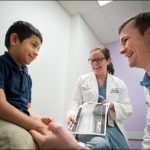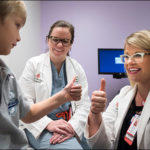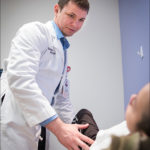 Imagine spending several months trying to find the pathogen responsible for a cluster of Burkholderia cepacia infections among critically ill, hospitalized patients. For infection preventionists, solving this mystery can be a daunting task but not impossible if you have the epidemiology skills and collaborative resources in your investigative toolbox.
Imagine spending several months trying to find the pathogen responsible for a cluster of Burkholderia cepacia infections among critically ill, hospitalized patients. For infection preventionists, solving this mystery can be a daunting task but not impossible if you have the epidemiology skills and collaborative resources in your investigative toolbox.
When Texas Children’s had a small outbreak of B. cepacia infection last year, Texas Children’s Quality and Safety Director Elaine Whaley immediately sprang into action to identify the cause of the outbreak. Her extensive experience in infection prevention and control coupled with her professional networking skills helped her locate an infection preventionist at another pediatric hospital one-thousand miles away who had experienced a similar outbreak. Together, they identified the pathogen responsible for the B. cepacia outbreak in their respective hospitals.
Partnering with Infection Preventionist Angela Rupp of Lurie Children’s Hospital of Chicago, their collaborative investigation expedited the nationwide recall of liquid docusate, a medication used to treat constipation. This product was later found to be contaminated with the bacterium B. cepacia, which was directly responsible for the sudden outbreak of infection at both hospitals.
As a result of their work and commitment to promoting a culture of safe patient care, Whaley and Rupp will be recognized with the Heroes of Infection Prevention Award during a special ceremony in Portland by the Association for Professionals in Infection Control and Epidemiology (APIC).
“It is a great honor to have one of our own be nationally recognized for this heroic award in patient safety,” said Trudy Leidich, Texas Children’s assistant vice president of Quality and Safety. “We are grateful to Elaine and our Infection Control team for identifying the direct source of contamination in order to keep our patients safe and free from preventable harm.”
B. cepacia is the name for a group of bacteria that can be found in soil and water and are often resistant to antibiotics. The bacterium can cause life-threatening infection in high-risk, medically complex children, such as children with cystic fibrosis and immunocompromising conditions.
In February 2016, when a small cluster of patients at Texas Children’s and Lurie Children’s Hospital came down with B. cepacia infection, Whaley and Rupp initiated separate outbreak investigations. But once the two hospitals’ clusters were confirmed to be identical, the patients were combined to facilitate the investigation.
After thorough analyses, their investigation found that the ducosate product at each hospital came from the same manufacturer. After reporting these findings to the Centers for Disease Control, the Food and Drug Administration was called into the investigation which subsequently resulted in a national product recall. This recall protected patients at Texas Children’s and patients at other pediatric hospitals across the nation from this serious pathogen.




